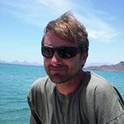- Humboldt squid,
- jumbo squid,
- Dosidicus gigas,
- ommastrephid,
- egg mass,
- rhynchoteuthion paralarvae
The jumbo or Humboldt squid, Dosidicus gigas, is an important fisheries resource and a significant participant in regional ecologies as both predator and prey. It is the largest species in the oceanic squid family Ommastrephidae and has the largest known potential fecundity of any cephalopod, yet little is understood about its reproductive biology. We report the first discovery of a naturally deposited egg mass of Dosidicus gigas, as well as the first spawning of eggs in captivity. The egg mass was found in warm water (25–27°C) at a depth of 16 m and was far larger than the egg masses of any squid species previously reported. Eggs were embedded in a watery, gelatinous matrix and were individually surrounded by a unique envelope external to the chorion. This envelope was present in both wild and captive-spawned egg masses, but it was not present in artificially fertilized eggs. The wild egg mass appeared to be resistant to microbial infection, unlike the incomplete and damaged egg masses spawned in captivity, suggesting that the intact egg mass protects the eggs within. Chorion expansion was also more extensive in the wild egg mass. Hatchling behaviours included proboscis extension, chromatophore activity, and a range of swimming speeds that may allow them to exercise some control over their distribution in the wild.
Journal of the Marine Biological Association of the United Kingdom, v. 88, issue 4, p. 759-770
Available at: http://works.bepress.com/brad-seibel/66/
